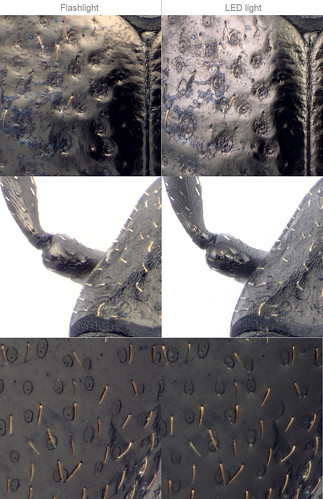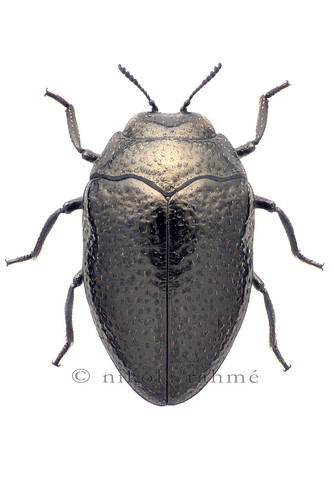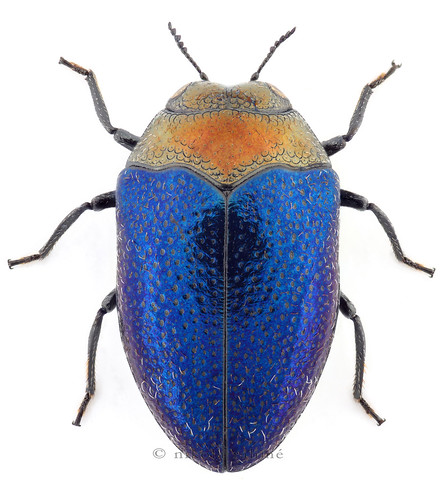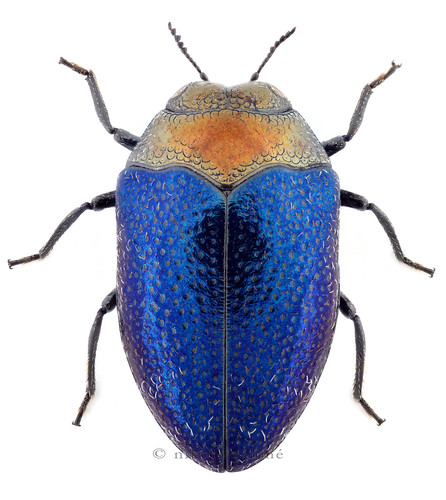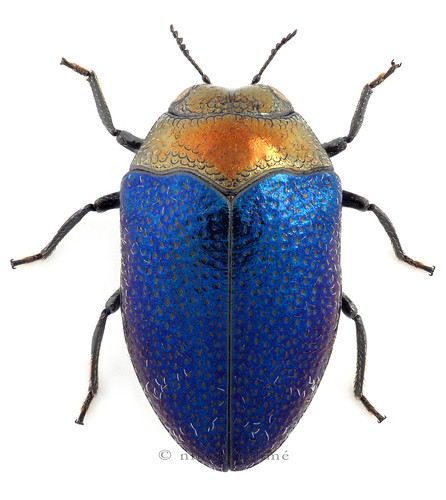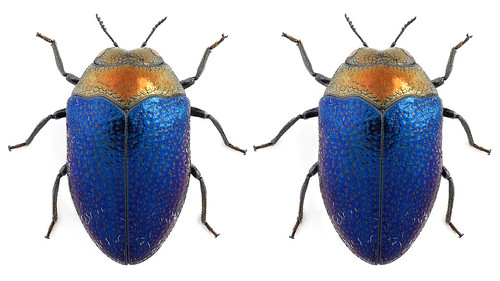Playing with the light by Nikola Rahmé
Nikola Rhame is well known for his beautiful studio stacks, showing always a perfect lighting technique. He has also conducted a few light experiments in his flickr, here we are going to show a couple of them:
Studio lighting comparison (flash vs. LED)
Since I use two different lighting system for high magnification studio photography, was curious about the difference of the effects.
Well, I choose a tiny leaf miner jewel beetle from my collection and did two stacking sequence. One lit with a Speedlite 580EXII flash through a plactic diffuser around the subject, and another with 2 IKEA table LED lamps through the same diffuser. Find the picture of the setup below!
Shots were taken with a Mitutoyo BD Plan 10x microscope objective on a Apo-Gerogon 9/150 enlarger lens at 9,2x magnification. 105 exposures in each stacks. Shutter speed with flash: 1/100 sec. (live view mode), with LEDs: 1/3 sec. (live view, silent shooting mode).
I found no remarkable difference in the light effects. Perhaps when the flashlight is coming frontwise of the beetle looks more natural than the two separated light reflection. Another strange thing appears: the different color of the LED lamps. I have 4 Jansjö lamps and none of them has the same colors.
Then I looked at the stacks at the original resolution and surprised of the difference. I do not know why, the LED lit version has slightly finer and perhaps sharper details.
Crops from the original images:
Check out the comparison below side-by-side!
How the setup looked like:
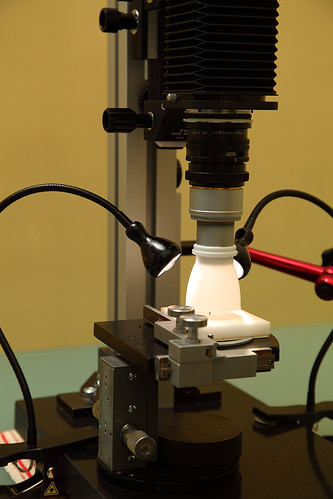
Playing with the light

I am a big fan of diffusing the light when photographing insects. Most of the shiny subjects looks far better under drastically diffused flash or other lights. The tiny details of the surface pass off in spotted illumination, so I always prefer using white plastic or white office paper around the insects.
Now I wouldn't show example shots with absolutely pure lights, I hope each of you know the problem. As my favorite family of beetles are the jewel beetles, I have a lot of experiences in shooting them. In the nature they frequent sun-exposed places, like cut woods, flowers or dry trees. Pictures made under these conditions will be overcontrasted, too many black areas and shiny spots, loosing the nice sculpture details. You'd be better to photograph them in overcast or in early morning.
Excercise in the studio gives useful experiences which can be profitable in the field.
Jewel beetles (Buprestidae) are mostly colorful, metallic insects, they always look exciting if the light is well controlled. I obtained some routine with this small fellow a few days ago. It is a prepared leaf miner beetle -Trachys troglodytiformis choosen from my collection. Its length is 2,95 mm.
For the test stacks I used the JML 21/3.5 lens on a bellows set to 7x magnification. Two sequences were made, first with a whole paper cylinder, second with the same cylinder but with a hole on it, and a translucent paper fixed on the hole. Both stacks were combined in two stacking methods of Zerene: DMap and PMax, surprisingly the results are different in terms of lighting effect.
My edification is the excessive diffusing loses from the nature of the subject in some cases. Let's check the examples below!
Fully diffused stack, processed with DMap:
Fully diffused stack, processed with PMax:
Partially light-exposed stack, processed with DMap:
Partially light-exposed stack, processed with PMax:
And a synthetic crossed eye stereogram from the shiny stack:
These articles were originaly published by Nikola Rahmé on his flickr site, below you have the links to the original place





